NOTE: This article was first published over at johncaz.net on the 29th March 2014
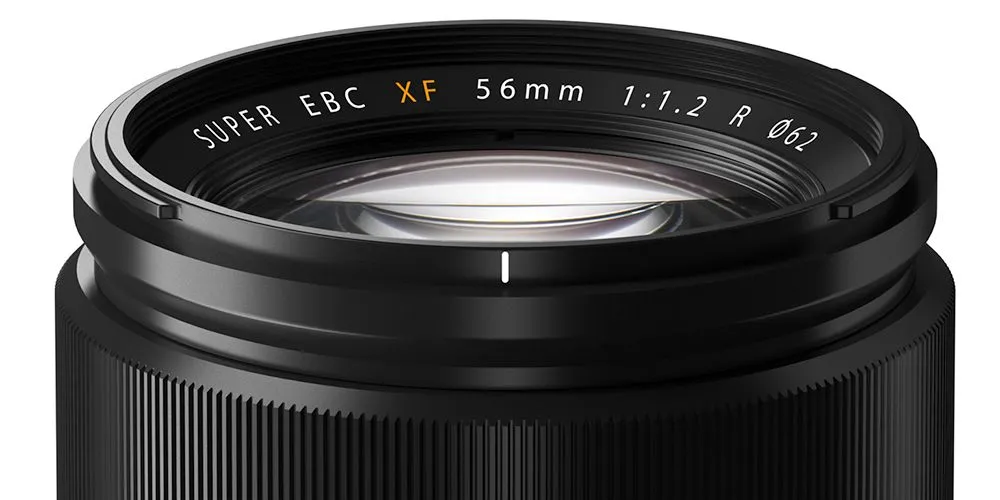
INTRO
Fuji offers a light weight and very capable camera system with some of the best optics and I’m so glad I have switched because now I can finally concentrate on the photography. They currently offer 3 innovative cameras (XPro-1, XE-2 and X-T1) and some of the finest lenses I have ever used. And Fujifilm know a thing or two about making high quality professional grade lenses look here. So far I have been blown away by the performance of the XF 18-55mm, XF 23mm and the subject of this review, the XF 56mm.

BUILD
The lens is beautifully crafted and solidly-built. It’s an all metal construction with a precision metal mount that uses 4 evenly spaced screws on the lens and 6 evenly spaced screws on the X-T1 mount. When compared to my Nikon gear, I like and appreciate this arrangement. Trivial, but I found it interesting and thought I would pass it on. Overall, the build quality of this lens is much better than any Nikkor I have ever used and is just as good as a Zeiss.
Size
Going over Fuji’s specs you soon discover that the all-metal XF 56mm is the biggest prime in the X-system line-up both in size (at over 7cm in length) and in weight (at around 405g). For those who own the XF 23mm, the 56mm has the same diameter but is slightly longer. Despite the size the lens is lighter than you might expect and it handles well on the X-T1.
Focus ring
The focus ring is also metal and has a nice to the touch ridged texture. It offers a good grip, it’s smooth in operation and is well-damped. Unlike my old Ais Nikkors the Fuji lenses don’t use gears so the focus ring is free to rotate continuously with no stopping at the nearest focusing distance or at infinity. At first, it felt unnatural but I soon got used to it and so far it seems like a good system.
Aperture ring
The lens offers a traditional aperture ring, which allows you to set the aperture in 1/3 steps, complete with full aperture markings on the lens barrel from f/1.4 down to ƒ/16. The aperture is also shown in the viewfinder or on the LCD screen. The aperture ring is nicely damped and makes a distinctive click as you change the f/stops, although I would have preferred some type of locking in the A position.
Optical construction
The optical construction looks complicated. It uses a total of 11 elements in 8 groups, two of which are ED (extra low-dispersion) elements and one aspherical element. Its an IF (Internal Focus) design which helps with fast AF operation and also helps to use a circular polarizer without hassle since the front 62mm filter thread doesn’t rotate.

In the above sequence the performance of single mode AF is displayed. I am using the X-T1 with the XF 56mm f/1.2 R lens set at f/1.4. I have set Single Drive mode, Single AF mode and AF Area mode with a size number 2 AF box placed on the eye on the right. My son is constantly moving erratically back and forth and all shots are in perfect focus. More on my camera and AF setup can be found here: "Setting up the X-T1"
AF PERFORMANCE
As already mentioned, the 56mm lens offers internal focusing (IF). In practice, I found the auto-focus to be fairly quick and mostly reliable, although not offering quite the experience as the 18-55mm which is both faster and quieter. Though the 56mm seems more precise with less hunting. But these are really small differences, the big difference between them is the clunky sound and vibration of the 56mm which really shouldn’t be present in a 900€ lens.
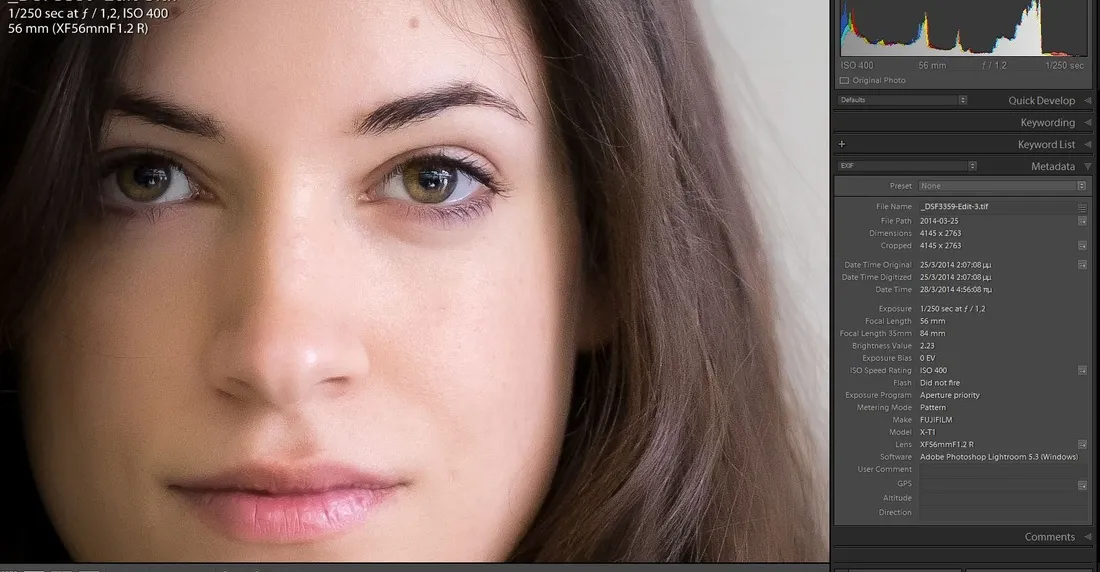
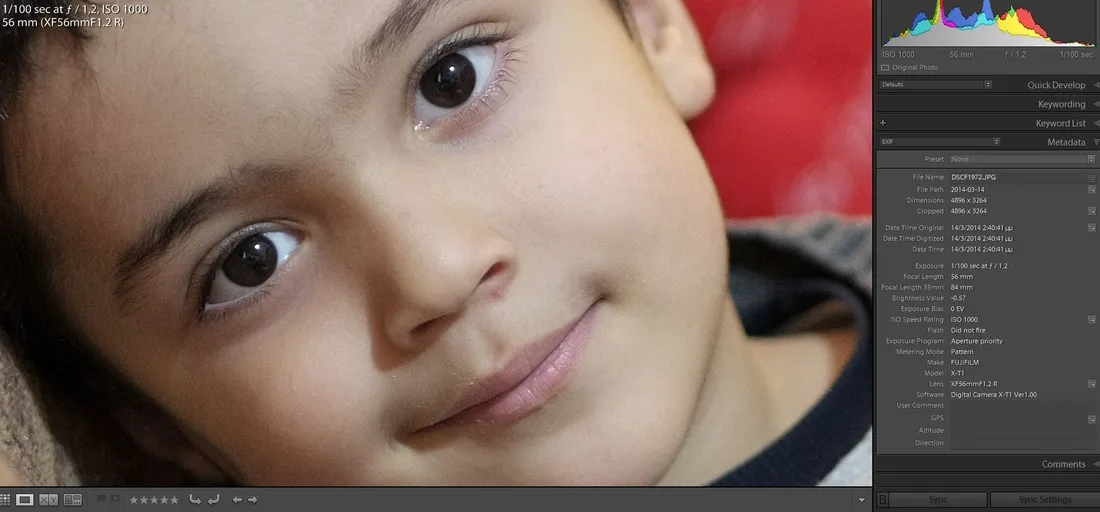
In the above 100% screen grabs you can get a taste of the sharpness produced by this lens.
OPTICAL PERFORMANCE
It’s spectacularly sharp from wide open all the way to f/16. At f/1.2 it’s so sharp you’ll cut yourself! Anyway you will be blown away by the results. Even the edges of the frame are sharp. As with most lenses in this focal range, as you start to increase the focus distance, the performance drops. Don't be alarmed though, as a portrait lens you will be using wide apertures at close distances and for any other work, such as street or landscapes, you will be working at longer distances and smaller apertures preferably between f/4 – f/8.
Aberrations
This lens for all practical purposes shows no visible signs of any aberrations under most lighting conditions though I must admit, I did have one test shot where longitudinal CA created some purple fringing in the highlights of the out of focus part of the image at f/1.2 and at times you can get spherical aberration wide open which looks like a blurry glow around high contrast objects like a fence against the bright sky. So under extreme harsh lighting conditions, you can get some purple or green fringes along contrasty edges when wide open or at f/1.6 but even then it’s so well controlled that in most cases it goes unnoticed. I wouldn’t worry about it.
Light falloff
Vignette or light falloff is also very well controlled. From wide open till f/2 its unnoticeable unless you are photographing an evenly toned background and is usually measured around a ¼ stop. From f/2.8 onwards, its a non issue.
Distortion
Fuji 56mm lens shows practically zero distortion.

In this 100% screen capture you can see the sharpness that the lens offers at f/2.8. Also note that this shot was taken against the sun (just above and out of frame) with no lens hood on. The main reason i have included this test shot, was to show the bokeh performance once you start closing the aperture. Notice the 7 sided bright highlight on the left. Plus you can see some degree of fringing on that same highlight.

BOKEH
Two lenses I admire for their creamy bokeh performance are the Samyang 85mm f/1.4 and the Nikkor 105mm f/2.5. Unfortunately, the Fujinon XF 56mm doesn’t have the same level of creamy bokeh but comes close. Bokeh is important because a good portrait lens should be able to “milk-away” any busy background and I love good bokeh. And even though the Fujinon XF 56mm lens didn't produce the creamy bokeh I was hoping for at smaller apertures, it still plenty good for my purpose wide open.
LAST WORDS
Fujifilm has sincerely done a great job with their X series by providing top notch products at very reasonable prices. As for the XF 56mm, typically such a bright lens brings with it some big sacrifices such as sharpness, vignetting or CA, but Fuji has managed to avoid all of the known shortcomings of such a fast design. With stunningly sharp images, even in the corners at ƒ/1.2 with extremely minimal aberrations and distortion, X-T1 portrait shooters should not hesitate to invest in this lens. Highly recommended!
IMAGES TAKEN WITH THE XF 56mm f/1.2R
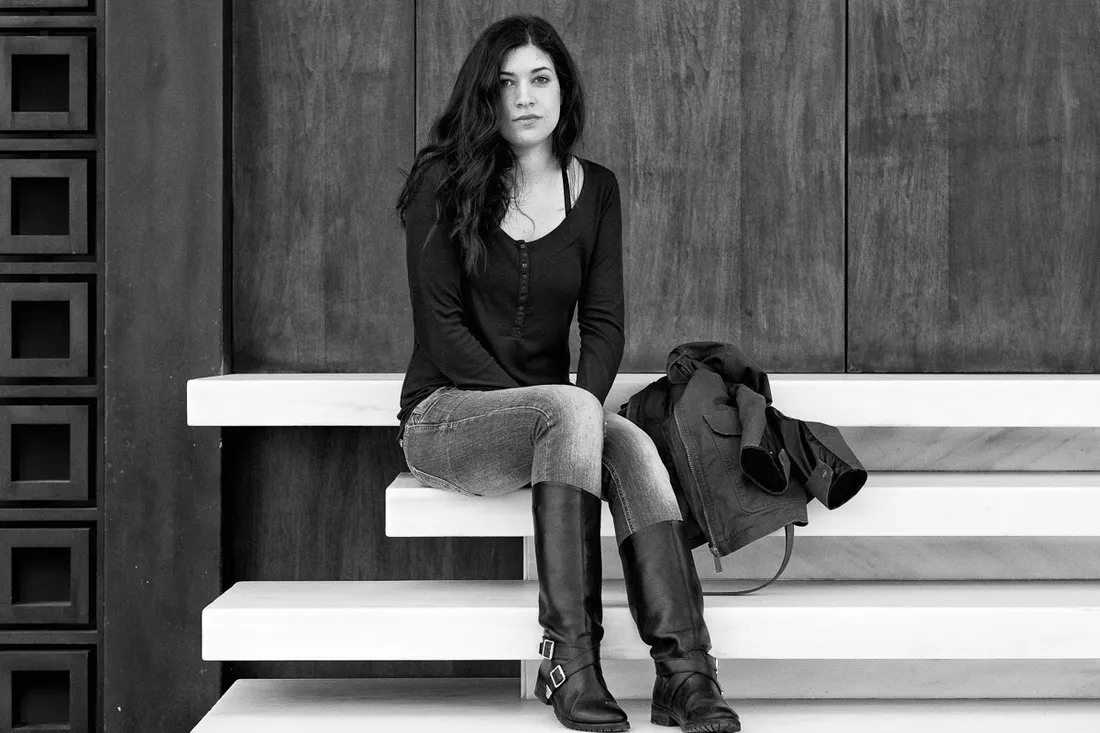
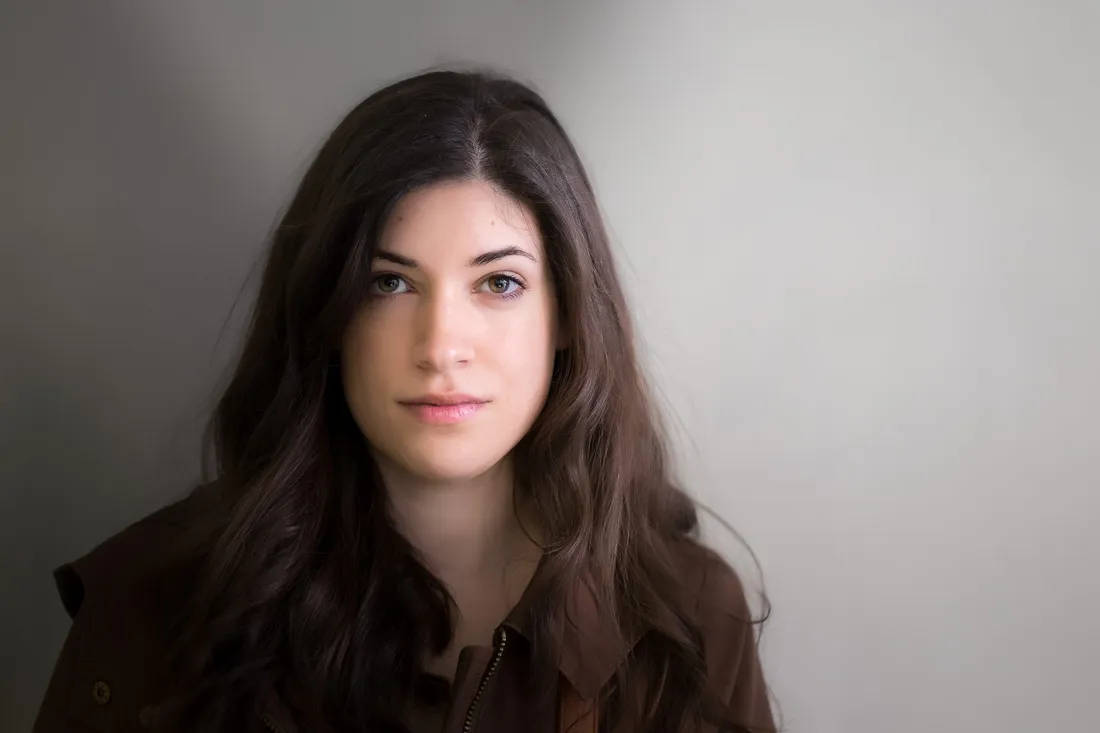



THE GOOD
- Very nice bokeh (wide open)
- Excellent optical performance from wide open all the way to f/16
- First class build quality, better than any Nikkor
- Very good AF
- Excellent MF ring with a positive smooth action
- Reasonable price
- Size & weight are a good match for the X-T1 & grip
- Large hood is always welcome on any lens for better performance
THE BAD
- Too fast for X series bodies (max 1/4000sec shutter) LOL
- 7 bladed diaphragm doesn’t help bokeh when you start to close down
- No weather sealing
- No lock on aperture ring
- A tighter action for the aperture ring would have been preferable
- Size & weight may not be a good match for the XE-2
- Large hood is too conspicuous and cheap looking. Could be a problem for OVF users
UPVOTE & SHARE
If you enjoyed this article I would really appreciate an upvote ;-) You could also help me by resteeming my article for others to find and read, thanks!